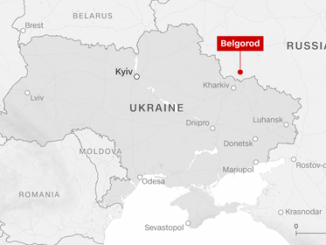
During the past year, open interest, or the total number of West Texas Intermediate (WTI) futures and options contracts that have not been settled, has declined by 763,000 contracts (26%), averaging 2.28 million contracts in July 2022.
If the month-to-date average for August of 2.24 million contracts holds, it would be the lowest monthly average since November 2014.
The U.S Energy Information Agency (EIA) said that the decline in open interest was the result of many market-participant trading decisions and likely stems from a decline in hedging activity among crude oil producers and a decline in holdings among non-commercial traders as crude oil prices have increased during the past year. The effects of declining open interest could include more price volatility and an increase in trading transaction costs, but other financial market indicators show mixed evidence of these effects.
The U.S. Commodity Futures Trading Commission (CFTC) requires holders of futures contracts that exceed a certain threshold to report their holdings weekly, and those holdings are aggregated in the CFTC’s Commitments of Traders report. Futures and options are two types of financial derivatives commonly used to trade crude oil. A futures contract obligates parties to transact crude oil at a predetermined date and price in the future.
An option contract gives the buyer the right, but not the obligation, to buy or sell crude oil at a set price in the future. In these markets, a long position means the holder buys crude oil for future delivery, whereas a short position means the holder sells crude oil for future delivery. Total long contracts must equal total short contracts because every buyer must have a seller and vice versa.
However, within each category of traders long positions and short positions can be unequal, which allows analysis of the changes in holdings by these categories of traders.
Among the short positions, the largest declines have been in the producer and merchant category and the swap dealer category. Producers and merchants, also known as commercial traders, predominately engage in the production, processing, and handling of crude oil, and they use financial markets to manage financial risks associated with those activities.
Similarly, swap dealers tend to be large financial institutions that use financial markets on behalf of clients whose primary business is producing, processing, or shipping crude oil. The producer and merchant category typically have a net short position, reflecting the need of those selling crude oil to use short contracts to mitigate the financial risk of oil prices changing before delivery.
Since the first week of August 2021, however, producers and merchants have steadily reduced their holdings of short contracts by 34 percent (215,000 contracts), maintaining a net long position through the period. The loss of this relative short position suggests reduced hedging activity among producer and merchant traders, such as crude oil producers. High crude oil prices and recent losses from hedging activity reported by publicly traded crude oil producers could be contributing to this trend. In addition, increased price volatility could also contribute to higher costs for hedging.
The decline in total long contracts reflects changes in holdings by non-commercial traders, who are market participants that have no business activities related to crude oil. In other words, non-commercial traders trade crude oil futures and options for exposure to oil prices as part of a financial portfolio of assets. Most contracts held by these traders are long positions. At the beginning of the Covid-19 pandemic, non-commercial traders increased their holdings of long contracts by 29 percent (158,000 contracts) over five weeks, from March 17, 2020, to April 21, 2020.
Since the first week of August 2021, these traders have decreased their holdings of long contracts by 40 percent (236,000 contracts). Notably, while money manager long positions have returned to 2019 levels, other reportable traders’ long positions are 52 percent smaller than the 2019 average.
Similar to declining open interest among commercial participants, declining open interest in money managers and other reportable traders’ long positions suggest several possibilities.
Investors may see fewer profitable opportunities for long exposure to WTI prices, which could be caused by concerns about a potential economic recession. In addition, reduced hedging from commercial traders could limit opportunities for non-commercial traders to open long positions.
Lastly, as crude oil prices have increased in 2022, non-commercial traders may have automatically reduced long positions in WTI contracts to maintain similar levels of financial exposure as in the past, which means they need fewer contracts now to maintain the same value of WTI contracts in their holdings.
One effect of lower open interest is less liquidity, which is the ability of traders to easily enter and exit positions by finding other buyers and sellers. Periods of low liquidity tend to increase price volatility and transaction costs. Crude oil prices have been volatile in 2022, and although most of this trend is likely a result of the significant crude oil supply and trade disruptions following Russia’s full-scale invasion of Ukraine, some of it could also be the result of declining open interest.
Another indicator of liquidity is trading volume or the number of active contracts traded per day. Generally, a higher trading volume indicates more liquidity. Monthly WTI futures trading volume indicates a slight decline in trading volume compared with monthly averages from 2016–20, but trading volume during the past year has been greater than the average before 2016.
Similar trading volumes compared to historical averages, even with declining open interest, could suggest that the decline in open interest is not significantly affecting liquidity. Yet, determining the full effects of less open interest on liquidity remains open to further analysis.



